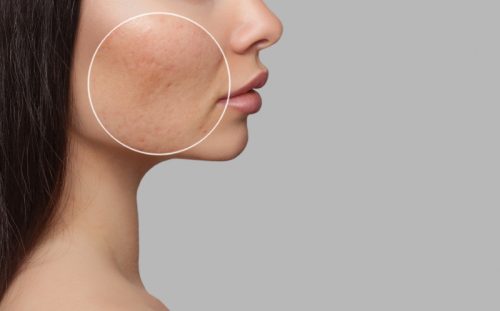
Have you tried treating dark spots on your own without getting the results you want? Do you see new dark spots appear as others fade? If you answered yes, you’re not alone. Dark spots and patches, medically known as hyperpigmentation, are a common concern, particularly for individuals with darker skin tones. In this comprehensive guide, we’ll explore what hyperpigmentation is, its different types, causes, treatments, and preventive measures.
Understanding Hyperpigmentation
Hyperpigmentation refers to the darkening of certain areas of the skin due to excess melanin production. Melanin is the pigment responsible for skin coloration. When triggered, the skin produces more melanin, leading to the formation of dark spots or patches. These patches can appear in various forms and locations on the body.
Types of Hyperpigmentation
There are several types of hyperpigmentation, including:
Post-Inflammatory Hyperpigmentation (PIH): This type occurs after skin inflammation or injury heals. Conditions such as acne, eczema, or psoriasis can lead to PIH.
Melasma: Commonly known as the “mask of pregnancy,” melasma presents as large, irregular patches of darkened skin, often on the face. It is associated with hormonal changes, particularly during pregnancy or with the use of oral contraceptives.
Age Spots: Also referred to as liver spots or solar lentigines, age spots are flat, brown, tan, or black spots that develop due to prolonged sun exposure. They commonly appear on sun-exposed areas like the face and hands.
Causes of Hyperpigmentation
Hyperpigmentation can result from various factors, including:
- Sun Exposure: Overexposure to sunlight stimulates melanin production, leading to the formation of age spots.
- Skin Inflammation: Conditions such as acne, eczema, or injuries to the skin can trigger post-inflammatory hyperpigmentation.
- Hormonal Changes: Fluctuations in hormone levels, as seen during pregnancy or when taking certain medications, can cause melasma.
- Medications: Some medications, such as antimalarial drugs and tricyclic antidepressants, can induce hyperpigmentation as a side effect.
Treatment Approaches
The treatment of hyperpigmentation depends on its underlying cause. Here are some common treatment approaches:
- Addressing Underlying Conditions: Treating underlying skin conditions like acne or eczema is essential to resolve post-inflammatory hyperpigmentation. Once the condition is under control, dark spots often fade over time.
- Sun Protection: Sunscreen is a crucial aspect of hyperpigmentation treatment and prevention. Daily application of broad-spectrum sunscreen with SPF 30 or higher helps prevent further darkening of existing spots and protects against new ones.
- Topical Treatments: Various topical agents can lighten dark spots and even out skin tone. Ingredients like hydroquinone, retinoids, kojic acid, and vitamin C are commonly used to fade hyperpigmentation.
- Chemical Peels: Chemical peels, performed by skincare professionals, can help improve hyperpigmentation by exfoliating the skin’s outer layers and promoting cell turnover.
- Laser Therapy: Laser treatments, including intense pulsed light (IPL) therapy, target melanin in the skin to reduce hyperpigmentation. However, multiple sessions may be required for optimal results.
Preventive Measures
Preventing hyperpigmentation involves proactive skincare and lifestyle choices:
- Sun Protection: Wear sunscreen daily, reapply every two hours, and seek shade during peak sun hours.
- Gentle Skincare: Use gentle skincare products suitable for your skin type to minimize irritation and inflammation.
- Avoid Harsh Chemicals: Steer clear of skincare products containing potentially harmful ingredients like steroids or mercury, which can exacerbate hyperpigmentation.
Conclusion
Hyperpigmentation is a common skin concern that can significantly impact one’s self-confidence. Understanding its causes and treatment options empowers individuals to take proactive steps towards achieving clearer, more even-toned skin. By adopting sun-safe practices, using appropriate skincare products, and seeking professional guidance when needed, it’s possible to fade dark spots and prevent their recurrence effectively.
Remember, achieving radiant, healthy skin is a journey that requires patience and consistency. With the right approach and proper care, you can unveil the natural beauty of your skin and embrace a more confident, glowing complexion.

